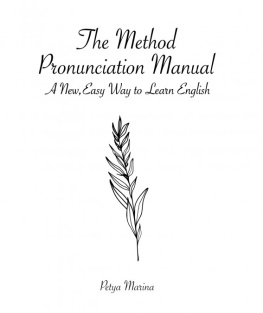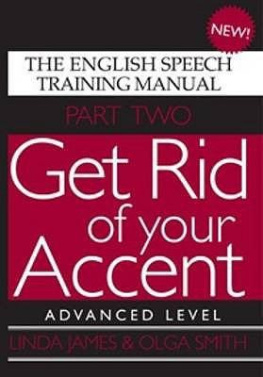Master your business lingo by practicing words, phrases and sentences in the style of The Financial Times, BBC News and The Economist.
Why we wrote this book
After we published our first book, Get Rid of your Accent, Part One, we launched accent reduction courses.
Our clients included: - Financiers - Lawyers - Entrepreneurs - Diplomats - Management consultants - Business executives - Top IT consultants - Call centre employees - Business students They enjoyed our courses and called them life changing. Many of our clients were promoted, as their speech became educated and easy to understand. In our first book, mentioned above, and our second book, Get Rid of your Accent, Part Two, we deal mainly with every day vocabulary. Our first two books are based on speech training the old-fashioned term is elocution used for decades in drama schools. In this book, by contrast, we have collected contemporary words and expressions that are used in business today. After we showed a few chapters of this book to our prospective students, they became really excited, and told us that this is exactly the vocabulary they hear at work on a daily basis.
This is undoubtedly the first book on the market of this kind, as it combines both speech training and business vocabulary. On top of that we managed to find quotes and proverbs that help you not only with learning English sounds, but also with improving your use of English in a fun way!
Method of learning
In our book, we set out a complete method of learning English sounds, which someone who comes from a different country might not have in their own native language. One of the important things about our book is that we make it absolutely clear what is happening in the mouth: where the lips go, where the tongue is placed, if the jaw is open or closed, etc. Once those three positions are checked and sorted out then there is no way that you could not make that particular English sound. The second important part of speech training is training the muscles of the tongue, lips and jaw, so that the brain responds automatically. You train them by pronouncing words and sentences with the target sound.
You finish with a little bit of verse, something interesting and amusing, but also containing the target sound. For consonants we also give practice through articulation exercises, such as period verses and tongue-twisters, which get the tongue and the lips really moving so that we get clarity and crispness of speech. English is a very energetic and dynamic language, and good articulation makes a big difference. Exercises in the book are accompanied by a sound tracks. Students should listen to the audio tracks, practice the correct sound throughout, and then record themselves and listen to the recording in order to see their progress. We also encourage students to use the correct sounds in their everyday speech, and support learning with additional exercises at the end of each lesson.
The audio tracks were recorded by professional actors who use drama techniques in order to make the sentences, verses and poems sound interesting and amusing. This also helps you to use your imagination as you are reading, and that will help you to memorise sounds. The lessons in this book are quite intensive and are aimed for those who strive to achieve outstanding results in improving their accents within a short period of time. Your results might depend on your ability to hear your own speech and the time you spend mastering the sounds. At the end of the book we also provide students with instructions and advice on how to maintain correct pronunciation. In support of that we give a warm-up exercise for all the English sounds (see page 134).
Students will also particular difficulties with the English pronunciation which speakers of other world languages have. What is needed to start working with the book? A mirror, to compare the shape of your own mouth to the shape of the mouth that you will find in diagrams at the beginning of each lesson; A recorder or voice memo app, to record your practices; A phone or tablet. How many hours you should spend on each sound: Practice each sound for about 20-40 minutes a day, with little breaks in between; Repeat on the following days for approximately the same length of time until you feel that you can use the correct sound in your everyday speech. The method of learning is based on a six-stage process: 1. Put your tongue, lips and jaw in the correct position for the sound (see p. 2. 2.













